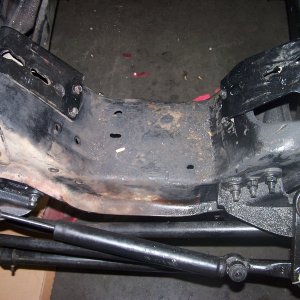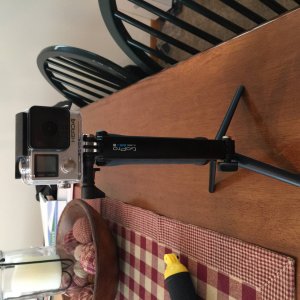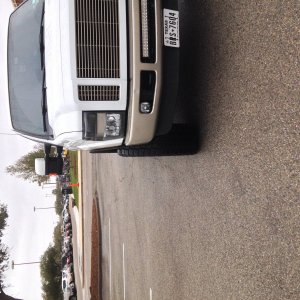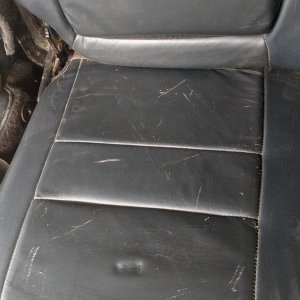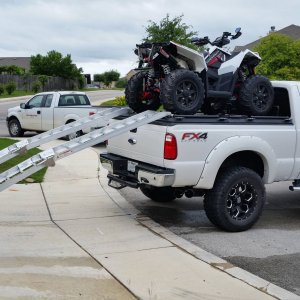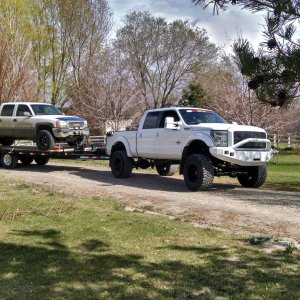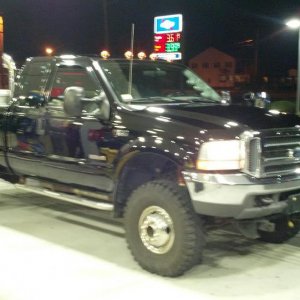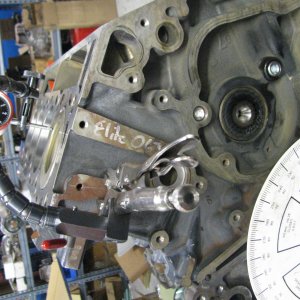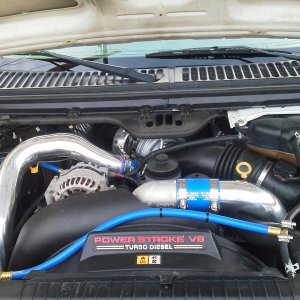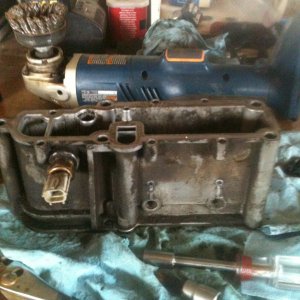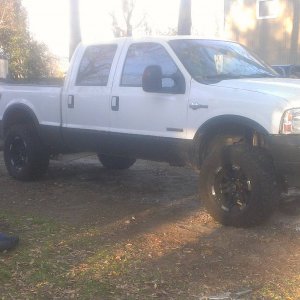Ok great, so explain my current situation to me. I'm reading fuel pressure behind the heads, with an Isspro EV2 fuel pressure gauge. I'm using a brand spanking new OEM ford fuel pump, the OLD style fuel filters without the o-ring setup for the filter on the fuel rail, the updated FPR spring in the fuel housing, and I can't seem to maintain any amount of usable fuel pressure with stock injectors and mild tunes according to my fuel pressure gauge. Any thoughts? There are no leaks in this system. I'm seeing over 60psi at idle, actually closer to 67psi at idle. With even a mild street tune I can drain fuel pressure to 25psi or less with quick burps, so what would you recommend? I have a buddy with the exact same setup, except he's using an AD2, running lines right from that to the heads bypassing the factory bowl and his readings behind the heads match mine. Your thoughts on this? I've been chasing this down for quite some time and can't seem to figure it out. Again, boiling down to dynamic vs. static fuel pressure. I can't help but wonder how much my readings would differ up at the fuel bowl vs. way back behind the heads...
I'm sure your readings at the filter bowl would be different. If you read off the filter bowl, you are measuring "pre-filter", "pre-front fuel lines and banjos" and "pre-demand (injectors)".
Before I built my very first fuel system for the 6.0L, waayyyyy back when the Edge Juice w/Attitude was "the $hit" for the 6.0L, I had similar problems. Good stock fuel pump, stock injectors, EJw/A...20-30psi of pressure drop when I would get on it hard. You have to admit, the EJw/A was not exactly up to todays SCT tuning, I'm sure that just about any mild to moderate "street" tune today would obliterate that old tuner...but the point is the same either way. The stock fuel pressure management setup and stock fuel lines are inadequate.
After building the first prototype fuel system and installing it, the pressure drop issue went from 20-30psi to ZERO DROP. That same fuel system, with the help of an AirDog FP-100 low pressure unit, was left installed in the truck through numerous power upgrade iterations. While I was never extreme with that truck because it was a daily driver and tow rig, not a racer, it did get upgraded injectors, SCT tuning, several different aftermarket turbos, etc. In all of the time I owned and drove that truck...after installing the regulated return kit, the most pressure drop I ever saw was about 1-3psi when filters started getting dirty. Pressure was monitored at the fuel pressure regulator, which was of course located AFTER the fuel rails where it could do the best job. This same fuel system design has been used by a ton of direct customers and also other shops that purchase my product, and the only time we see pressure problems are when the pump has an issue, the pump is too small for the injectors or when there was something messed up during the installation.
Consider this, a regulator is a "drain" on the pressure side of the fuel system. If your filter/pump has a regulator, that's a drain (the fuel is not going to the engine). You also have a drain in your filter bowl (with a stock style regulator) or after the heads if you have a regulated return. Your injectors are all "drains" as well (they are removing pressurized fuel from the rail). Keeping pressure up is a matter of properly managing all of the drains. The fuel pump needs to move enough fuel to properly supply the 8 most important drains (the injectors). If the pump volume exactly matches the fuel usage of the injectors at their highest demand, there should be no fuel returning to the tank and the pressure would be 0psi...so you obviously need enough volume to exceed the injectors usage in order to have pressure in the rail. Assuming we have enough volume to more than supply the demand of the injectors, the next issue becomes the next weakest drain in the system. In my opinion, you should not have a drain in the pressure side of the fuel system that is located BEFORE the demand. Whether the spring pressure of the regulator is higher than stock or not, it just creates problems. The stock fuel pressure regulator setup, even with a stiffer spring, is notorious for doing exactly what you are describing. In the case of your friend with the filter/pump, he's got a drain located way back by the tank, not to mention the fact that he's running a device I've had specific problems with and refuse to sell until (if) they fix it.
Maybe I need to take some pictures of the differences between the stock fuel pressure regulator setup and a "real" pressure regulator. Ford is asking a tiny little spring and poppet valve to adequately do a job that is better performed by a much larger device. The stock spring is about 1/8" in diameter and about 1" long (not measuring one, just from memory)...the spring in a Fuelab or Aeromotive pressure regulator is about 1-1.5" in diameter and about 1-1.5" long. The difference is significant, and the aftermarket regulators are simply not going to allow pressure to bleed off when its not supposed to. Couple that with placing the regulator AFTER all of the pressure drop and all of the demand and you have a setup that will properly manage your fuel system pressure.
As I said before, I'm sure there are some that will argue with me on this. In my opinion, any modifications to the stock fuel pressure regulator (stiffer springs, shims, etc) are "bandaid" attempts to fix a design problem. I also believe that crossover lines are bandaids as well, they don't address the pressure regulator issue and since the system is still "closed" they don't do anything about actual flow...they are simply a "balance tube".
strictly diesel... formerly ITP, who makes and sells the ITP regulated return. Nice unit.
Mostly correct...and thanks!
We don't (though some customers still might) call it an "ITP" fuel system any longer. All of our manufacturing is done under the "Driven Diesel" name now. Strictly Diesel is our "retail" operation, Driven Diesel is our manufacturing and wholesale operation (no direct consumer sales). This allows our dealers to stock and sell our product without having items on their shelf with the name of a retail competitor.

